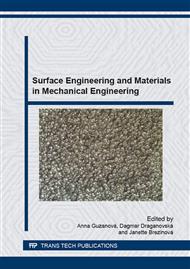p.198
p.202
p.209
p.213
p.217
p.221
p.225
p.229
p.233
Clinching - An Innovative Trend in Joining of Combined Materials in Car Body Production
Abstract:
Various ferrous and non-ferrous materials and their combinations are used in car body production in automotive industry. The most commonly used method for joining the materials is resistance spot welding. Some materials or combinations of materials are very difficult or impossible to join by resistance spot welding. Therefore, car producers are seeking for alternative joining methods. One of the innovative joining alternatives is clinching. The paper presents the results of evaluation of clinched joint properties. The high-strength dual-phase steel sheet DP600 in combination with the drawing grade steel sheets DC06, DX53D+Z and DX51D+Z were used for experiments. The influence of position of the sheets relative to the punch and die of the tool on the carrying capacities of the clinched joints was observed as well. The tension test and metallographical analysis were used for the evaluation of clinched joint properties.
Info:
Periodical:
Pages:
217-220
Citation:
Online since:
May 2015
Authors:
Keywords:
Price:
Сopyright:
© 2015 Trans Tech Publications Ltd. All Rights Reserved
Share:
Citation:


